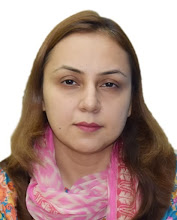Chapter 23: Designing for Inclusion - Exploring learner variability and jaggedness! Part 1
Date/Time: 4th September 2024 Wednesday, 4:02 am
My key takeaways from the module 1 of the online ISTE course on "Design for Inclusion". Now this was an interesting dive into the course and there were new concepts for me and some needed revision. I really like the concept of Learner Variability, and the way the instructor explains through examples, it sounds like giving respect to learners who might be unique or different in any way. An example in a video shared talks about the fingerprints being all different and we all know that none of us has similar fingerprints. It is actually the same as having a class of 30 diverse learners coming from varying backgrounds and each is different.
The term "Jaggedness" was new for me but quite intriguing. There is an interesting example shared by Todd Rose about two learners having the same IQ level but being different in varying aspects including knowledge, numeracy, vocabulary, reasoning, visual learning etc. The next thing he mentions is the context and how it deeply connects to the child's behaviour, learning and development. No matter how messy or hard the context, it might help the teacher design learning experiences accordingly. And third he talks about designing for average, which is why most students drop out of school at times. As all students are different, our education systems categorize all of them as "average".
Now I could actually connect this to my teaching and learning experience at a private school here in Pakistan. It's a diverse landscape, not linear in any way due to a number of factors including lack of resources, lack of funding, lack of training, variations in the socio economic status of people, varying backgrounds etc So we have schools that follow matric stream, cambridge stream, IB stream etc. As far as the matric stream is concerned it is a traditional classroom setup designed for the average child not considering the jaggedness, context of learning styles.
They learn the content in the text book and write the same in the final exams. While teaching essays, a learner told me that they have guides with written essays on different topics, they learn those by heart. If I gave them a topic outside the book to write, they were not able to write about it. This sounds worrying. The same goes for equations in the math textbook. There is usually a fixed chair table set up in classrooms. The content to be taught is fixed by the board (that the government controls). And though I tried to involve the learners in various extracurricular activities, most parents were only concerned with high grades. Even if the learner wanted to participate in extracurricular activities both the teacher and the parent were denied access.
I remember a child who could write with a left hand but the school had chairs with a right hand side for writing. And we requested the authorities to get different chairs for that learner. Small things that make a lot of difference to the learner. Usually the furniture in the classrooms is not for learners with variability , it’s designed for the average learner, so anyone can sit on the chairs.
I remember parents sharing a concern about creative writing skills of learners, and I started lessons on creative writing and I was amazed to see the various imaginative passages the learners came up with. They were all different! And we recorded these as podcasts, details in link below:
https://alberunionlineradiostation.podbean.com/
The concern is when these primary learners reach middle school or secondary school the education system is designed in a way that instead of nurturing creativity, it kills it literally. And I have seen and observed this. It focuses on numbers and grades only. And that is where we start losing the real creative learners who may have the potential to become great authors, writers, architects, sportsmen, designers, choreographers , dancers, film producers, astronauts, scientists, actors, programmers, educationists and the list is endless.
As an educator , the matric stream in Pakistan is not designed for inclusion. It's fit for learners who tend to become either doctors or engineers. The example of a fighter pilot cabin shared by Todd Rose fits here. They had to redesign the cabin so any pilot could easily fit in, and they started with adjustable seats. The issue identified was with the cabin design and not the pilot or the training.
Sharing some interesting thoughts! more in my next post soon InnShaaAllah.
Happy Reading!
Regards and prayers
Sheeba Ajmal

Comments
Post a Comment